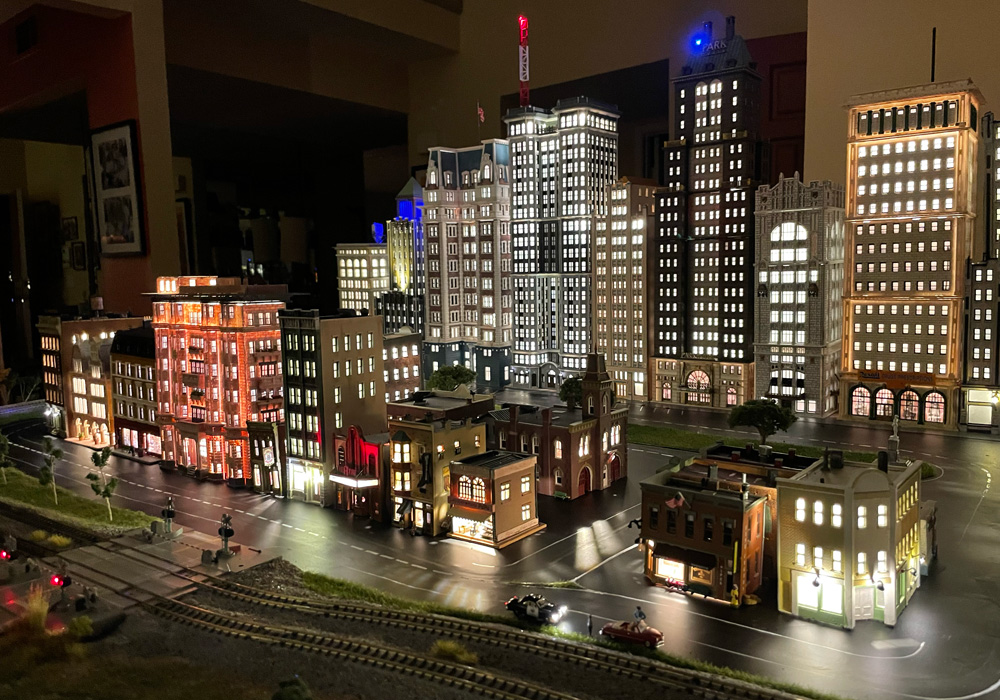
By Ari Sandel Ever since I was a little kid I’ve always loved miniatures, whether I was making models or painting toy soldiers. And though I always appreciated trains, I never had an actual train set because it seemed so intimidating. Flash forward to me in my 40s, when I convinced my best friend to […]
Read More…
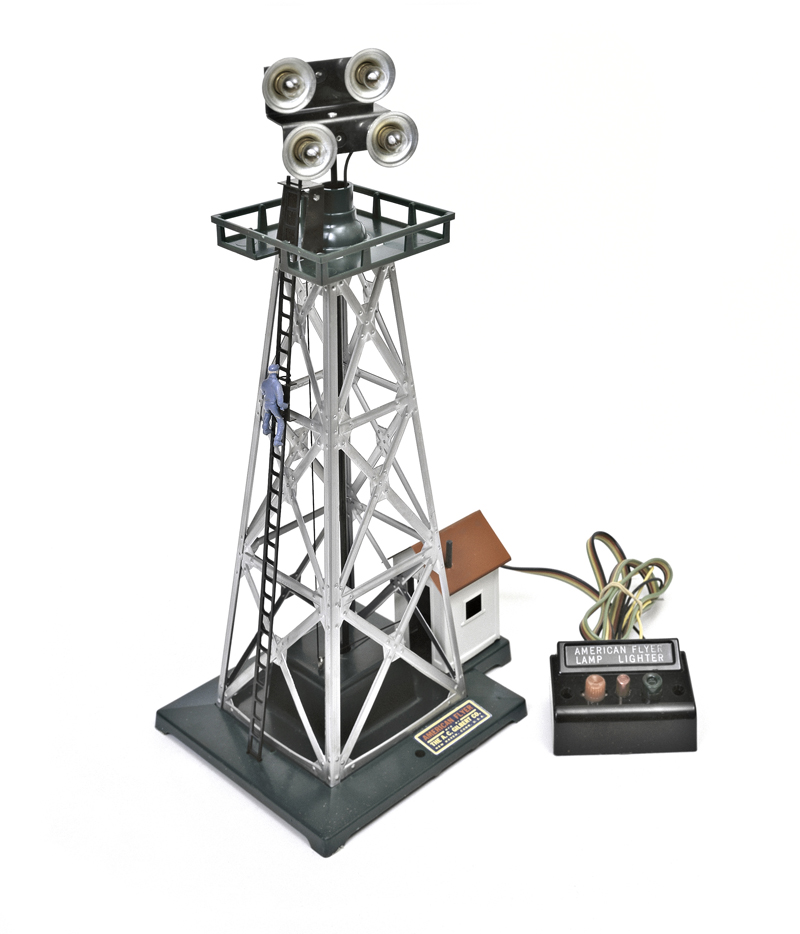
Lionel wasn’t alone in making landmark accessories after World War II. Colber and Marx brought out great ones. Above all, the A.C. Gilbert Co. developed outstanding S gauge accessories for its American Flyer line. One of the most significant and collectible was the No. 23780 Gabe the Lamp Lighter. The 23780, arguably the last great […]
Read More…
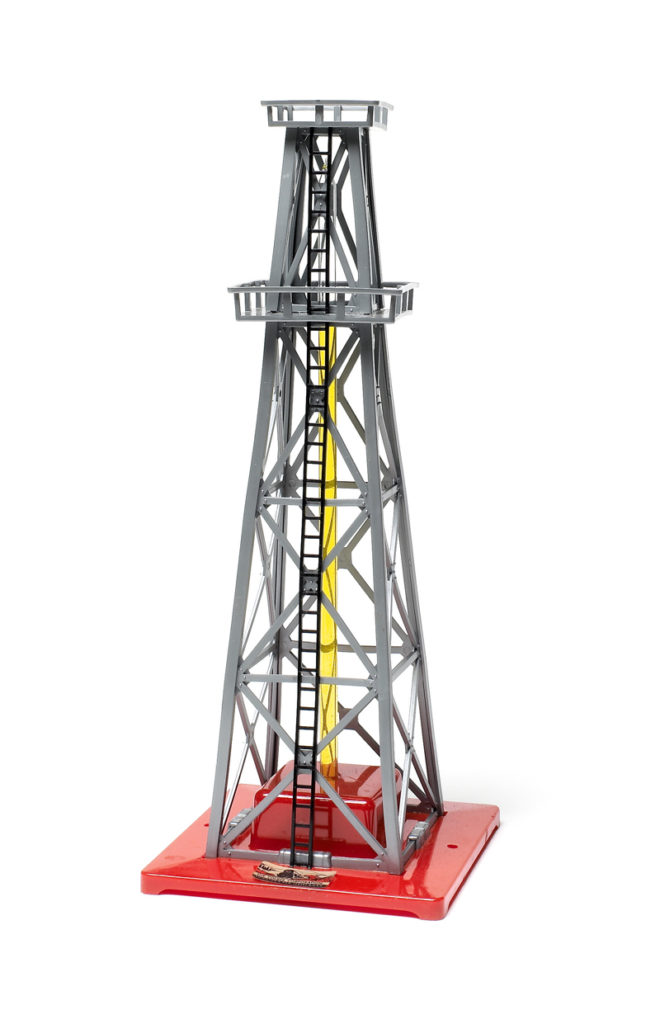
Amazing how an idea can take off and conquer a segment of the toy industry in the blink of an eye. In 1950, three manufacturers introduced oil derricks. No big deal except that, even though toy manufactures had been producing miniature oil cars since the very first years of the 20th century, there were no […]
Read More…
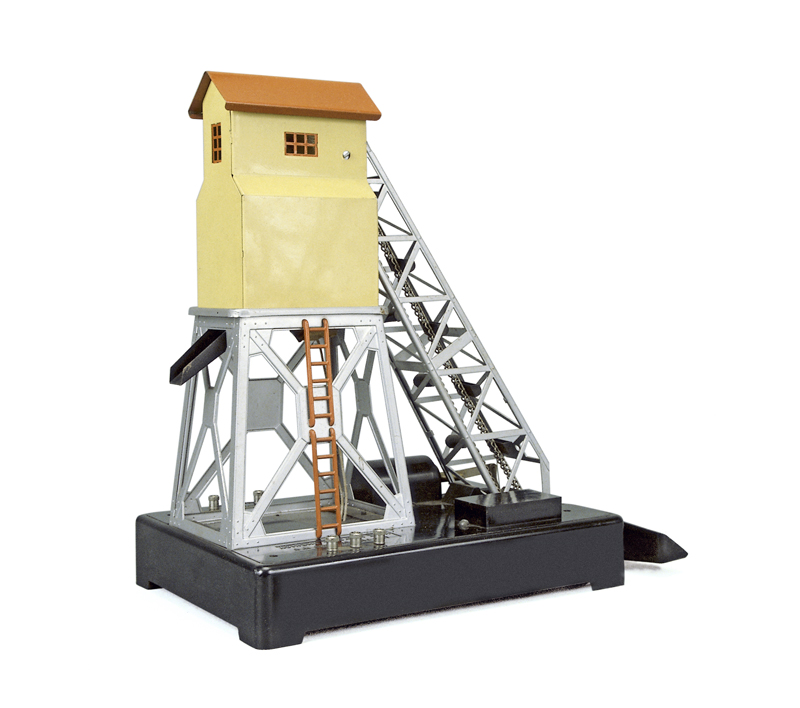
The trend of motorized accessories replicating activities associated with railroading began at the Lionel factory in New Jersey. Let’s spotlight the revolutionary No. 97 coal elevator, which made its debut in 1938. Prototypical – not always accurate The idea of a vertical loader with buckets on a chain that lifted coal from a receiving bin […]
Read More…
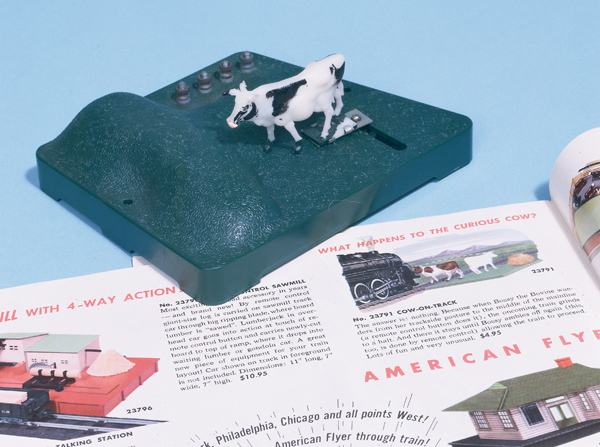
The world of animated O and S gauge toy trains accessories was, for all intents and purposes, a fairly serious one during the postwar era. Operating freight loaders, stations, and other facilities sought to imitate the activities associated with big-time railroading and industrial labor. There wasn’t time for frivolity. Where animals were concerned, however, all […]
Read More…
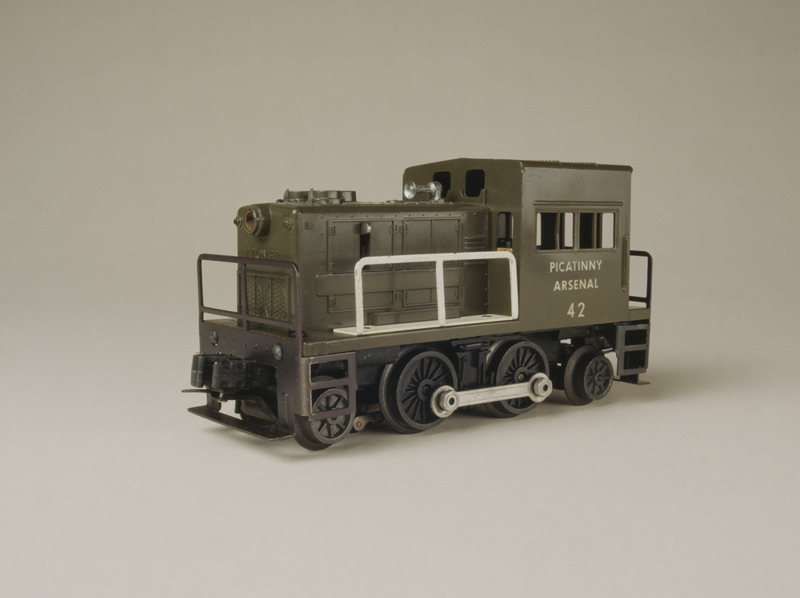
Joshua Lionel Cowen had adopted a firm stance on the need to avoid manufacturing “war toys.” Even on the eve of World War II, when Lionel was already producing precision instruments for the armed forces, Cowen refused to bend, unlike his peer and rival, Louis Marx. Everything changed in 1955, probably because the mood of […]
Read More…
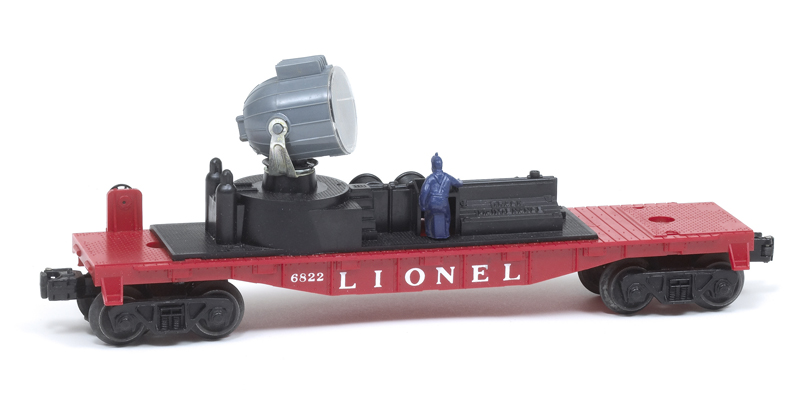
Improving a basic model: 1949-56 Lionel did not immediately fill its postwar line with a true searchlight car – just a work caboose equipped with a floodlight (No. 2420). The presence of a searchlight car in the rival American Flyer catalog, beginning in 1946, makes this omission more glaring. In 1949, Lionel brought out the […]
Read More…
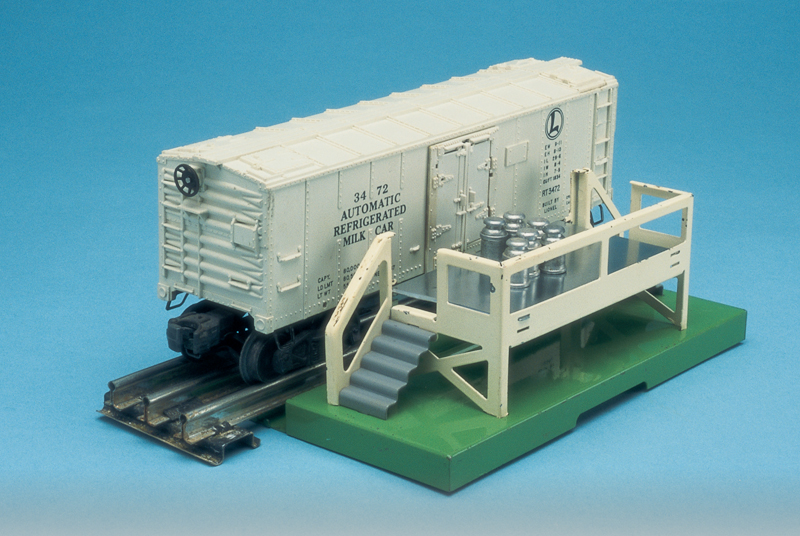
When you reach a certain age, every birthday deserves to be called a big one .Among other things, my celebration in July got me thinking about the toy trains that happened to be available when I was born in 1951. Specifically, I wondered what my dad might have bought for his infant son if he […]
Read More…
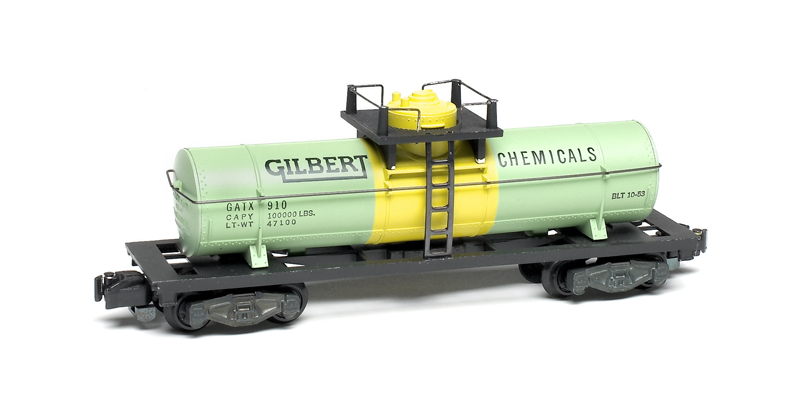
Despite the lack of play value in tank cars, boys wanted them because they reflected what kids saw in full-sized trains. So prewar manufacturers like Lionel and Ives developed tank cars, but hoped to do more with them. The breakthrough came in 1932, when Lionel worked out a licensing agreement with Sun Oil Co. Tank […]
Read More…
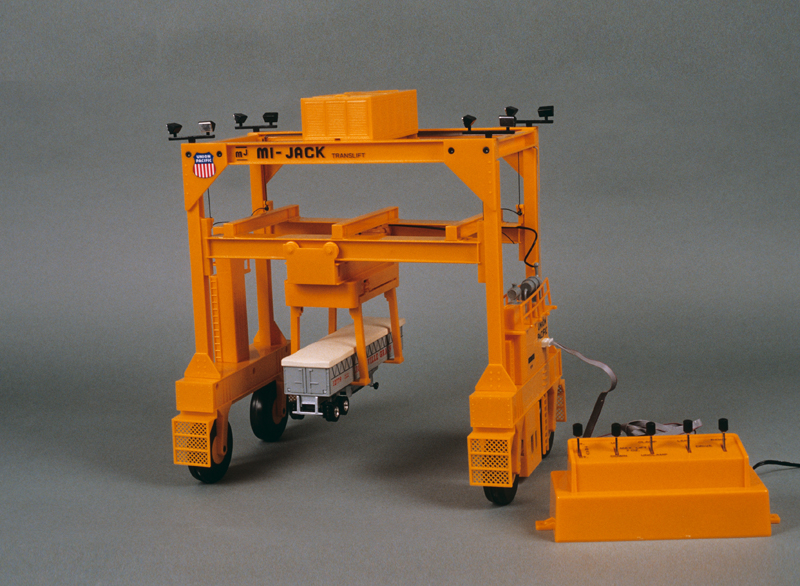
Prewar predecessors Cranes that can lift miniature cargo, rotate as they hold it, and lower it into a tray or a piece of rolling stock have been toy train staples since the first part of the 20th century. Perhaps the first such accessory made in America – certainly, the most celebrated of the prewar era […]
Read More…
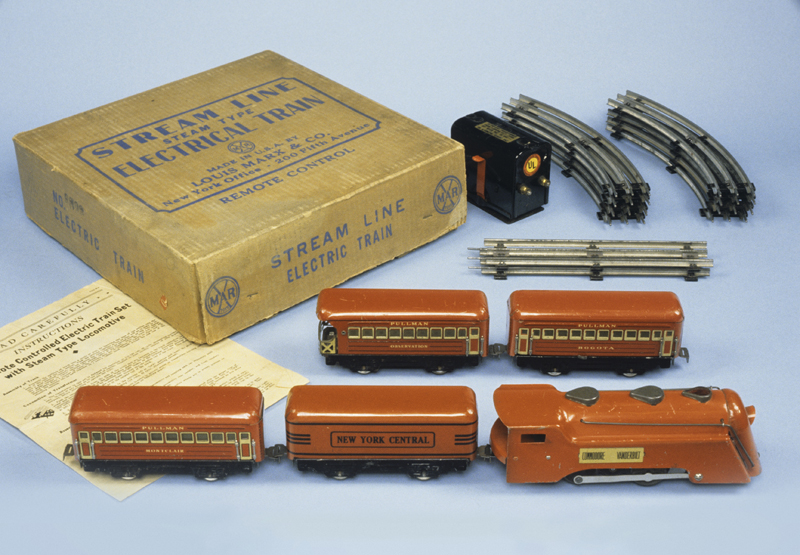
Starting in 1935, Lionel cataloged six models based on the Commodore Vanderbilt. None had a 4-6-4 arrangement, yet the look of the Nos. 264E, 265E, 289E, and 1689E (2-4-2s) and 1508 and 1511 (0-4-0s) made it clear these O and O-27 toys were derived from the sleek, curved design of America’s first streamlined steamer. Louis […]
Read More…
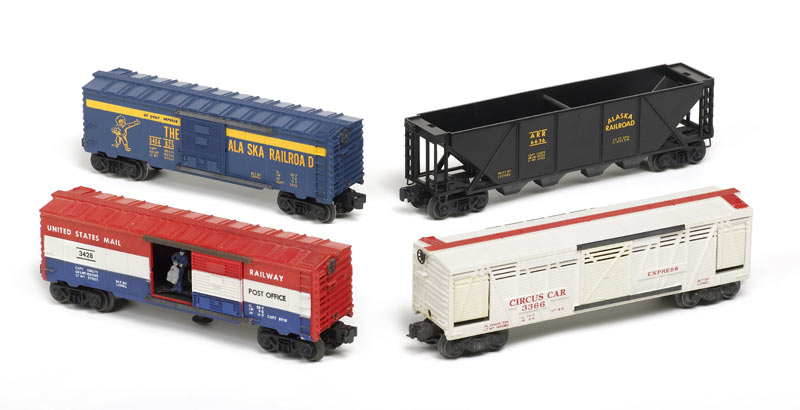
Lionel’s separate-sale items and accessories for 1959 Readers of our article on Super O and O-27 outfits cataloged in 1959 (September 2009 issue) will remember that the company experienced some earth-shaking changes in 1959. The turmoil started at the top, as Joshua Lionel Cowen sold control to Roy Cohn, his great-nephew. This confounding move by […]
Read More…












